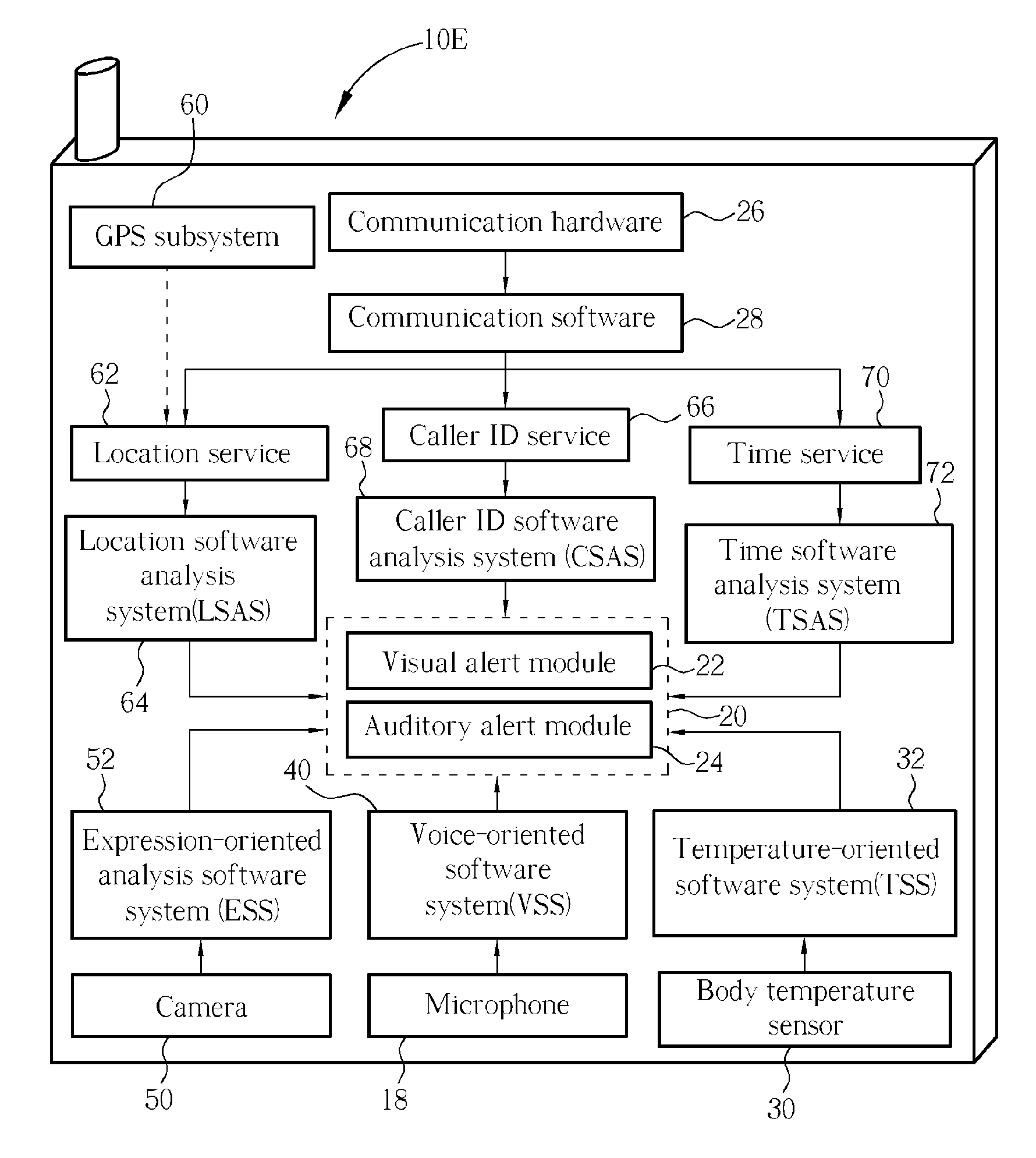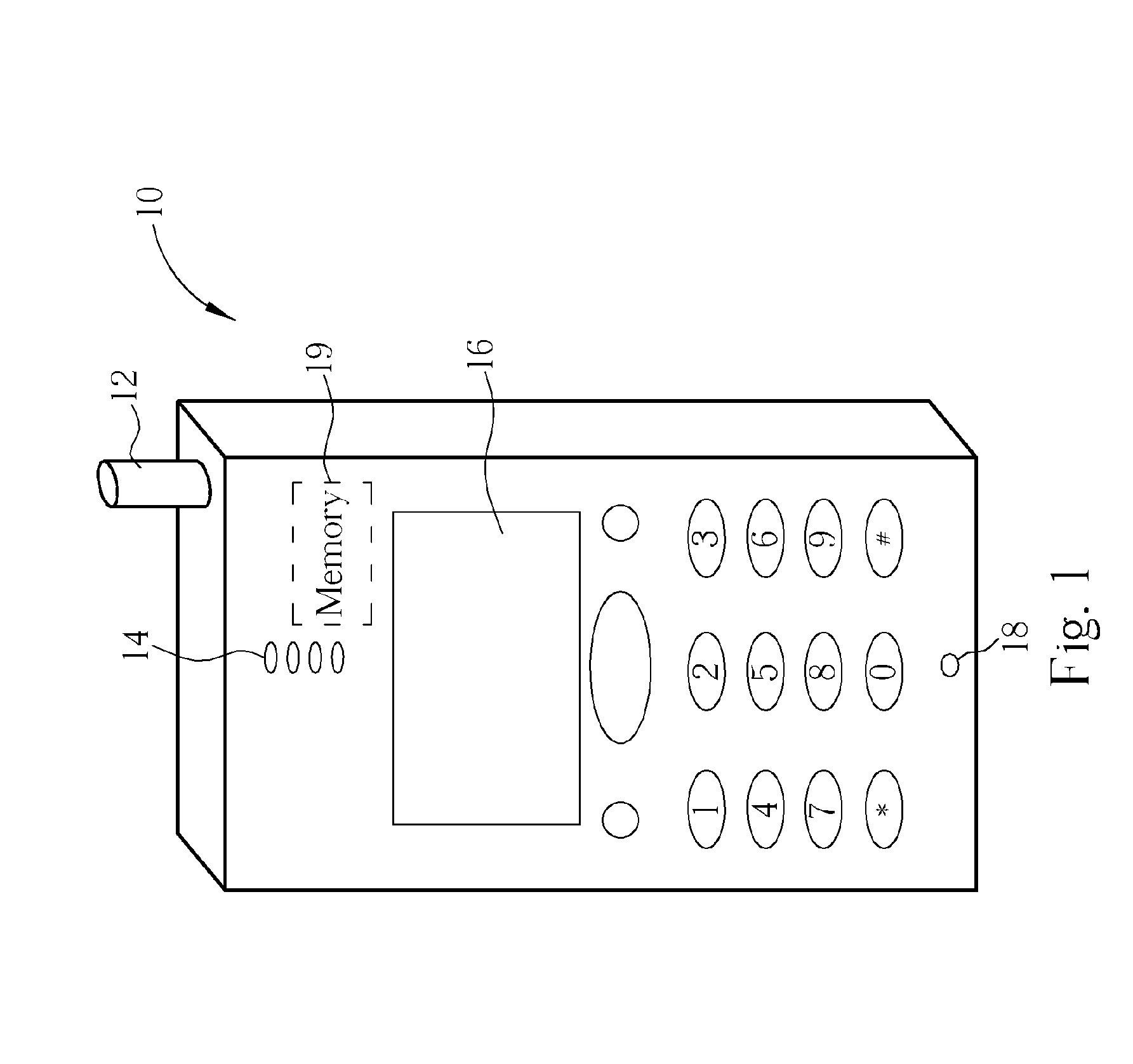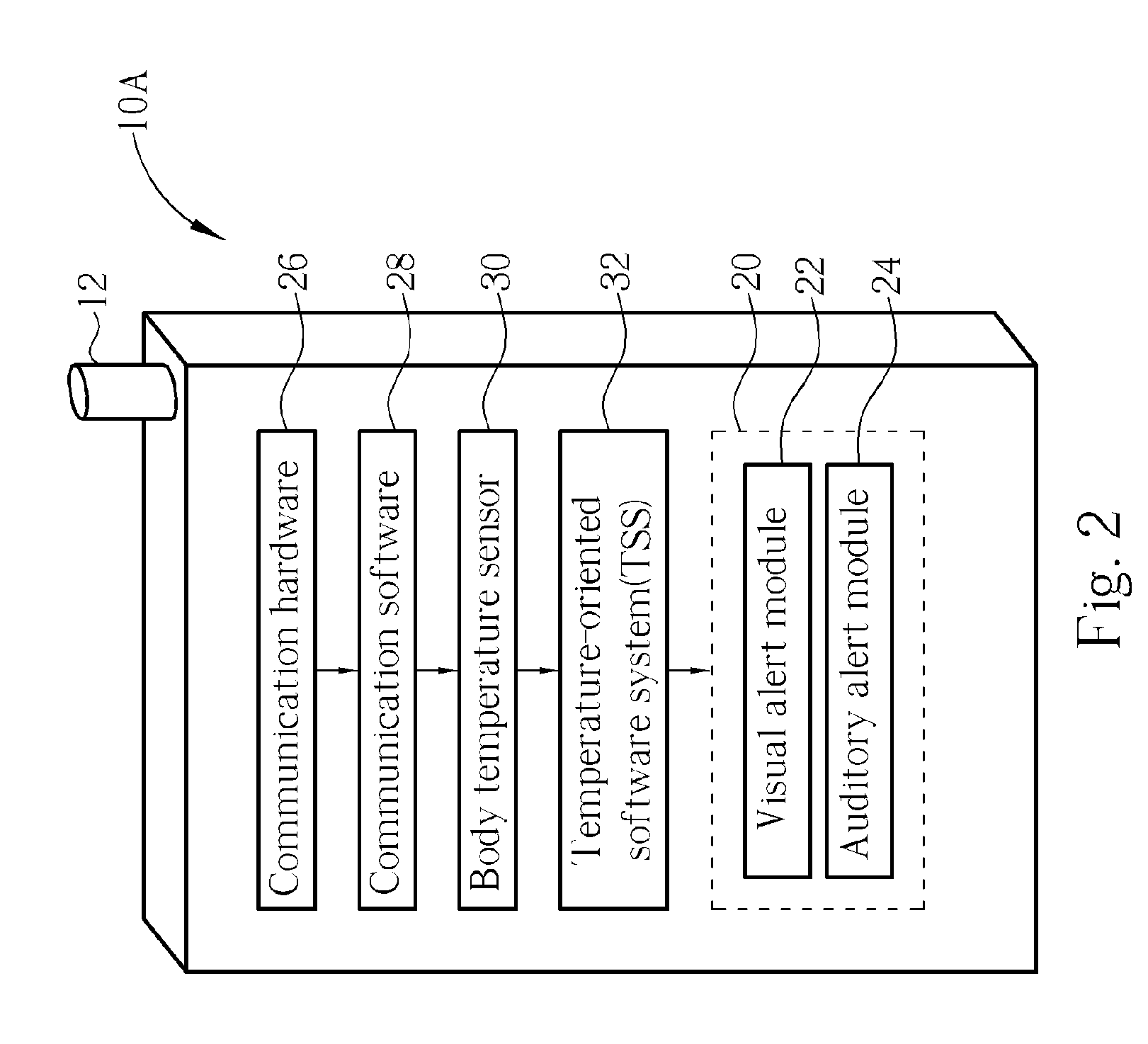Method for changing outputting settings for a mobile unit based on user's physical status
- Summary
- Abstract
- Description
- Claims
- Application Information
AI Technical Summary
Benefits of technology
Problems solved by technology
Method used
Image
Examples
first embodiment
[0027] Please refer to FIG. 2. FIG. 2 is a functional block diagram of a mobile station 10A according to the present invention. The mobile station 10A contains communication software 28 stored in the memory 19 for controlling operation of communication hardware 26.
[0028] The mobile station 10A of the first embodiment contains a body temperature sensor 30 for measuring the body temperature of the user of the mobile station 10A. The temperature measured with the body temperature sensor 30 is then sent to a temperature-oriented software system (TSS) 32. The TSS 32 compares the measured temperature with temperature data contained in the user profile stored in memory 19 and retrieves the alert settings that will be used to update the output devices of the mobile station 10A. The retrieved alert settings are then sent to an output device controller 20, which contains a visual alert module 22 and an auditory alert module 24. The visual alert module 22 adjusts light illumination characteris...
second embodiment
[0030] Please refer to FIG. 3. FIG. 3 is a functional block diagram of a mobile station 10B according to the present invention. The mobile station 10B utilizes the microphone 18 for receiving a voice signal of the user. People typically produce small changes in their voice when they are in different moods. The present invention uses a voice-oriented software system (VSS) 40 to analyze the voice signals and detect these changes in the voice. The VSS 40 analyzes voice characteristics such as voice speed, tone of voice, volume level, or the presence of predetermined words in the voice signal. Each of these characteristics are indicative of the mood of the user.
[0031] In order to save power, this feature will normally only be used when the user is making a phone call with the mobile station 10B. If power consumption is not an issue, then the voice detection feature can be activated continuously. If the user's voice indicates that the user is laughing, crying, yelling, or in any other ki...
third embodiment
[0032] Please refer to FIGS. 4 and 5. FIG. 4 is a functional block diagram of a mobile station 10C according to the present invention. The mobile station 10C utilizes a camera 50 for capturing images of the mobile station 10C user. The images are then sent to an expression-oriented analysis software system (ESS) 52. The ESS 52 analyzes the images, compares the images of the user with data in the user profile, and sends corresponding commands to the visual alert module 22 and the auditory alert module 24. FIG. 5 is a diagram showing how the mobile station 10C captures images of the user's face using the camera 50. The face is perhaps the best indicator of a person's mood. By comparing facial images with image data stored in the user profile, a very accurate analysis of the user's mood can be performed. The camera 50 can be activated whenever the user is having a conversation or when the user is using other features of the mobile station 10C, such as playing games on the mobile statio...
PUM
 Login to View More
Login to View More Abstract
Description
Claims
Application Information
 Login to View More
Login to View More - R&D
- Intellectual Property
- Life Sciences
- Materials
- Tech Scout
- Unparalleled Data Quality
- Higher Quality Content
- 60% Fewer Hallucinations
Browse by: Latest US Patents, China's latest patents, Technical Efficacy Thesaurus, Application Domain, Technology Topic, Popular Technical Reports.
© 2025 PatSnap. All rights reserved.Legal|Privacy policy|Modern Slavery Act Transparency Statement|Sitemap|About US| Contact US: help@patsnap.com



